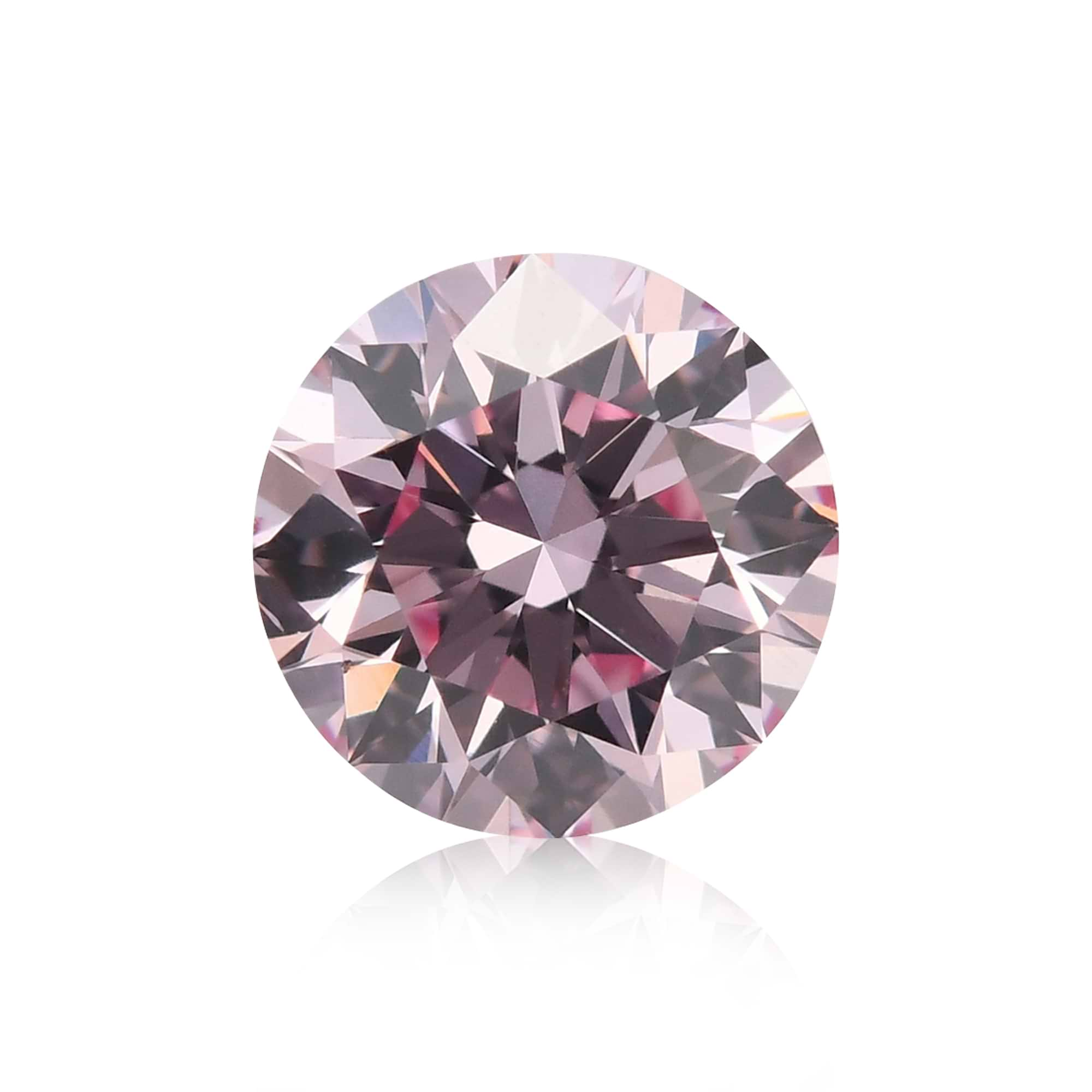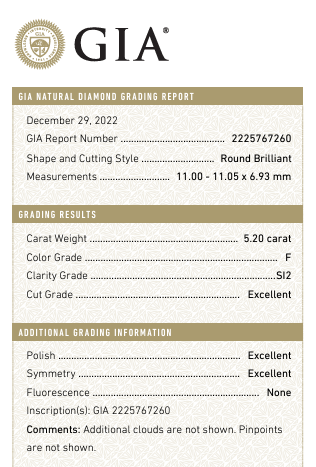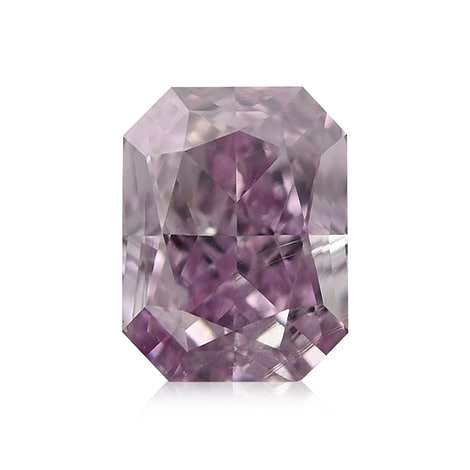With so much money at stake today, getting it right the first time when shopping for diamonds is paramount for jewelry consumers. Serious diamond collectors may hear the expression Triple X Diamonds to describe an elite group of expertly polished stones.
Triple cut diamond, triple x diamond, triple excellent diamond, triple diamond chart—are you getting confused yet? Even without knowing all the insider’s language, buying a diamond can be intimidating until you learn what the language means. We’re here to sort it out for you and arm you with straight talk to put you in control when diamond shopping.
You can’t know all the ins and outs of diamond quality but you can learn the intricacies of shopping for diamonds—then make your own informed decision. Sound good? Let’s go.
Did you recently go shopping for a diamond? Did the salesperson bring up terms like triple x, triple ex diamond or even a bit more confusing triple diamond chart? While these inter-exchangeable terms all revert back to the modern concept of triple x diamonds---and there’s so much to learn about it.
While it’s a trade term, consumers are beginning to hear it referenced when examining a superb diamond. And as a trade word, you may occasionally hear the phrase triple cut diamonds. It means the same thing. If you hear triple excellent, or even triple ex-diamond, don’t let these throw you off. They are essentially the same expression. Now you know.
Exploring Triple Excellent Diamonds
But what does triple X diamonds mean in plain language to the consumer? The expression Triple X Diamond refers to a stone with excellent cut, polish, and symmetry –hence the triple X ranking. These traits will appear on the GIA diamond report—however GIA does not use that exact terminology—they simply state the ranking of those traits.|
|
|
A Journey into Grading
More importantly, does it actually matter that a stone has Triple X rankings? You bet! The more excellent the cut and so on, the better the stone looks. It will have superior brilliance, scintillation, and dispersion. Those aspects of a diamond allow the stone to exhibit a superb light show—and sparkle far across the room as it’s being worn.
Significance of Triple X
So while you don’t see that terminology on a GIA diamond certificate, if you’re being shown a diamond in a retail setting, you will want to know what this means—since the salesperson will likely mention it when showing you a top-notch diamond. Triple X lays it all out for you, so whether you remember all the subtleties of the Triple X diamond grade or not—you can have assurance of getting a superb stone.
Beyond the Grading—The Nuances of Brilliance
Let’s examine things one at a time to better understand this trio of quality factors. After all, you’ll discover so many contributors to brilliance—and each one plays a role. Together, this nuanced array of quality factors adds up to one brilliant diamond.
Impact of Cut on Appearance
CUT:
This aspect of a diamond is considered to be its most crucial trait, because the cut determines the stone’s proportions —both its depth and each of the angles of its facets. A well proportioned diamond cut will allow the stone to exhibit the greatest amount of sparkle. It’s taken centuries for diamond polishers to understand the effect of cutting on a diamond’s brilliance. So diamond polishing and shaping has evolved continually over time to where it is today.
Smooth Surfaces and Crisp Light
The Triple Excellent diamond ranking assures the consumer of the most polished smooth surfaces possible on each facet. The result? Crisp light bouncing off every facet back to the eye.
This in turn is key to how light bounces around inside a diamond before returning to the eye. Poorly cut diamonds allow much of the light to leak out of the back or sides of the stone causing a dull look to the diamond.
 |
 |
Misconceptions and Pitfalls
There’s myth and then there’s reality when it comes to diamond quality. By learning what the top traits are in diamonds, you can aim for the moon.
Myth vs Reality
Some diamonds, while not earning a rating of Triple Excellent Diamond, are beautiful stones, because they possess many of the characteristics that fall into the Triple X category. So, don’t disregard a diamond automatically because you don’t see that Triple X ranking. Study it, get familiar with it and let your own judgement direct your decisions.
Pitfalls of solely relying on Triple X
But realistically, you may come across a diamond that doesn’t fall exactly in the Triple X diamond niche—but it’s gorgeous. And that’s fine. When you’re happy with your diamond selection, you’re more likely to enjoy its unique traits that make it all yours.
But back to our Triple X diamond line-up. We’re talking cut here---take a look.
An Excellent cut grade means that a diamond has been cut within certain pre-assigned parameters which in turn allows the diamond to give off its most intense brightness, sparkle, and fire. It also ensures the stone will have an even pattern of light and dark areas that are critical to its dazzle. Poorly cut diamonds, by contrast, may be observed having excessively large light or dark areas that make a stone appear dull or without ‘bounce’ as it is called.
What about symmetry, then? Aren’t all diamonds completely symmetrical to their desired shape? Not so much, experts say. Much of the polishing is done by hand, and that’s where human error or negligence can come in.
SYMMETRY:
Symmetry is an explanation of the exactness of a diamond’s intended shape. It can be round, called a Round Brilliant, or oval, or any of the other fancy shapes that are popular today.
So symmetry refers to several things that ultimately impacts its overall appeal. For example, when gauging symmetry, the expert looks for how well-aligned every one of the facets are and how identical the same types of facets are in shape, angle to each other and so on. This is a big concern as symmetry impacts the shape and proportion In a diamond.
With a stone displaying excellent symmetry, all of its facets should meet precisely at the girdle (the widest part of the stone that encircles it in the middle when viewed from the side angle).
And looking at the points of the kite-shaped facets appearing on the crown (top of the diamond when viewed in a setting) should align with those points of the wedge-shaped facets on the pavilion side of the stone. This is the bottom portion of the diamond most often hidden by the mounting.
Looking at the large table facet appearing in the center of the stone, with excellent symmetry, it should be centered perfectly. Examining the pavilion side of the diamond, one should observe facets on the bottom meeting in a perfectly centered point at the underside tip of the diamond.

What effect does all this complex data have on the diamond? A stone graded as having excellent symmetry greatly enhances the diamond’s light return (the light returning to the eye after it has entered the stone). Without understanding why for the novice, excellent symmetry makes a diamond appear more harmonious and perfectly balanced to the eye.
Let’s move on to the last of this trio of these Triple X diamond quality factors.
POLISH:
Focusing on the diamond’s polish grade includes assessing the quality of a diamond’s finish on each of the facets. That means how smoothly (or not) the surface of a diamond has been polished. That’s a difficult task for even the expert polisher to accomplish and some polishers don’t go the extra mile of creating a polish that appears completely smooth under a microscope or jeweler’s loupe.
A diamond graded as “excellent polish” exhibits no polish defects visible at 10× magnification which is the jeweler’s loupe. During the polishing process, minute surface defects, including pits and polish lines, are actually often created by the polishing wheel during the polishing process itself. So they need thorough scrutiny before being considered completely done.
These tiny imperfections can often be removed through another step of re-polishing. Keep in mind that we’re talking about microscopic imperfections that are usually invisible to the unaided eye. On the other hand, a conscientious polisher wants to remove these since having these surface defects will dim the brightness and sparkle of the diamond.
When visualizing polish on a diamond, think of that stone’s many facets to function as mirrors. The smoother the polished surface, the greater will be the stone’s reflection. A diamond gathers light through its facets which operate like mirrors from all directions by the observer. A diamond having the perfect proportions and exacting symmetry turn that diamond into a dazzling light show. The viewer may not be able to articulate just why the stone looks so brilliant, but he or she can certainly see the results of such expert work. These are stones which display fire and outstanding scintillation.
Factors Beyond Grading
Fluorescence Considerations
The Triple X Diamond ranking is but one of several factors to consider when looking for that all important diamond to cherish. Other elements, like fluorescence for example can impact the appearance of your diamond.When a diamond is subjected to UV lighting can have specific responses. Perhaps some 25-35% of all natural diamonds will show some reaction under this light. But is it bad or good? There are two camps of thinking. Some say it makes the stone look sleepy especially if it has a strong fluorescent reaction. But others remark that it can also help a lower color diamond appear more white! That’s what we want.
Proportions Matter
Outside of the Triple X consideration there are other things you may be drawn to or rather not have. Proportions are sometimes a personal thing. With emerald cut diamonds, or pear shaped stones for instance, there is a range of proportions. Some stones are more elongated and certain shoppers love that. Some prefer ratios of length to width that are ‘chubbier’ so to speak. The only way to see what you like is to look at several and then form your own opinion.
These qualities may seem complex to understand at first. And you may ask yourself, does it really matter to me? Do I ‘need’ a Triple X Diamond? While the only person who can answer that question is the consumer there are a few things to help make the decision.
Choosing the Right Triple X Diamond
A diamond engagement ring is the most cherished piece of jewelry a woman will have for her entire life. There is so much sentiment attached to this diamond---commitment, love and a sense of forever more. When viewed in this context, while a Triple X diamond will cost somewhat more than lesser grade diamonds, the extra cost seems to pale when considering this diamond will be enjoyed daily for the rest of her life. A beautiful diamond tells the story of a couple’s love for one another which is also a thing of beauty to behold.
 LEIBISH 0.51 carat, Fancy Purplish Pink Diamond, Round Shape, SI1 Clarity, Triple X GIA
LEIBISH 0.51 carat, Fancy Purplish Pink Diamond, Round Shape, SI1 Clarity, Triple X GIA
Vendor Selection
How rare are Triple X diamonds? You might be surprised to learn that in today’s diamond landscape they are not as rare as you would think. We mentioned earlier that diamond cutting evolved over the centuries to become the sparkly jewels we love today. By going to a reputable vendor you’re free to ask to see several diamonds—in different qualities and shapes. Your opinion is formed after looking at many options—so the more inventory the vendor has, the better it is for your ultimate choice.
Knowledge is power we know. So armed with this information, you can embark on a search for the diamond of your dreams, and not be caught off guard by the jargon of the business. You’re in charge here and you should be able to get the best quality diamond within your budget—then you’ll know you have a treasure to be proud of for years.
Consider Additional Performance Reports
Did you know some diamonds carry more than one diamond certificate? Or the vendor may not utilize GIA diamond certificates at all. They may utilize the services of other reputable labs to grade their stones. That’s fine. Take a look at the performance report and inspect it for the quality components that you care about most of all.
FAQs
Are all Triple X diamonds of the same quality?
This is an excellent concern for shoppers. Because diamonds are graded by various laboratory personnel and at different facilities it’s understandable that there can be some variations in their quality. Also take into consideration that a diamond can have a Triple X grade for its excellent polish—yet be a slightly lower quality of stone. So yes, there are differences in the quality of stones that bear the Triple X grade.
Do Triple X diamonds guarantee the most brilliant appearance?
When the grading is Triple X and the stone quality is equally high, then the stone will display a superior brilliance.
Can a Triple X diamond have flaws in its cut?
No, an independently graded stone with a Triple X rating should display no cutting flaws.
What factors contribute to the overall value of Triple X diamond?
The key factors in a Triple X diamond that weigh in on its value is the superb cut and polish, plus symmetry that optimizes its brilliance.
What are the disadvantages of solely relying on the Triple X grading?
While it’s easy to allow a Triple X grading to ‘sell’ the stone to a shopper, that’s not the whole story. A consumer should also go over the other quality factors like clarity and color which greatly impact the beauty of a stone. Don’t neglect examining those important traits.
What makes a Triple X diamond the preferred choice for engagement rings?
For many engagement ring customers, this diamond represents their first important diamond purchase. So it’s comforting to know that the stone has a high ranking. Also an engagement ring has a solitaire or at least an important center stone. Having that stone be a Triple X diamond means it will showcase the light performance to its absolute maximum.
Conclusion
The Triple X diamond cut is the one to go for—being all other factors are equal. This means that you can rely on a superior cut when your diamond has a Triple X ranking. But you need to take a holistic approach. Examining the entire stone for its clarity and color also has great value to you. Do you like the stone you’re considering? Does it stand out for you? These are valid questions only you can answer.
So don’t rush to purchase. Now that you’re more aware of what goes on with diamond polishing and the effects each of these factors have on the overall beauty of the stone, your eye is definitely more trained for the subtle aspects of diamond perfection.
When you’re at the sales counter looking at diamonds, take your time, and ask yourself, do I love this stone—compared to the others in this tray? Is there a stand-out quality about a diamond that catches your eye? Some experts claim that diamonds ‘speak to the customer’ telling them which one to select. We think that’s probably true. After inspecting a few in your price range, you’ll narrow it down to one or two that really stand out for you.
Don’t be afraid to ask questions other than if the stone is a Triple X. Things like fluorescence, clarity and its color grade are all important. While knowledge is power—and there’s no denying that---we also know that your heart will lead you to the perfect diamond for you.

















